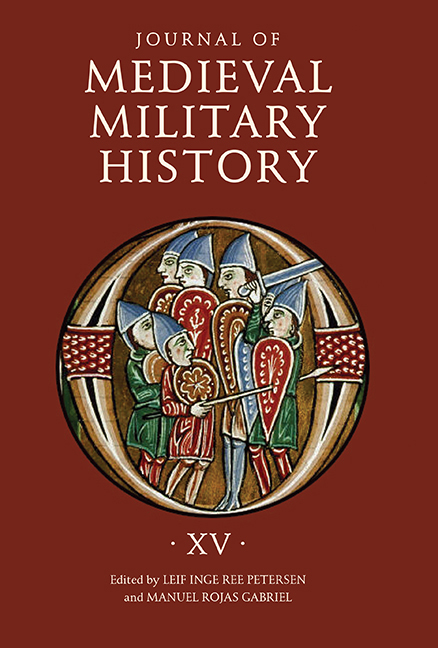Book contents
- Frontmatter
- Dedication
- Contents
- List of Illustrations
- Preface
- 1 Later Roman Grand Strategy: The Fortification of the urbes of Gaul
- 2 In Search of Equilibrium: Byzantium and the Northern Barbarians, 400–800
- 3 Evolving English Strategies during the Viking Wars
- 4 Norman Conquests: A Strategy for World Domination?
- 5 The Papacy and the Political Consolidation of the Catalan Counties, c. 1060–1100: A Case Study in Political Strategy
- 6 Alfonso VII of León-Castile in Face of the Reformulation of Power in al-Andalus, 1145–1157: An Essay in Strategic Logic
- 7 The Treaties between the Kings of León and the Almohads within the Leonese Expansion Strategy, 1157–1230
- 8 A Strategy of Total War? Henry of Livonia and the Conquest of Estonia, 1208–1227
- 9 The English Longbow, War, and Administration
- List of Contributors
- Journal of Medieval Military History
- De Re Militari and the Journal of Medieval Military History
4 - Norman Conquests: A Strategy for World Domination?
Published online by Cambridge University Press: 21 August 2019
- Frontmatter
- Dedication
- Contents
- List of Illustrations
- Preface
- 1 Later Roman Grand Strategy: The Fortification of the urbes of Gaul
- 2 In Search of Equilibrium: Byzantium and the Northern Barbarians, 400–800
- 3 Evolving English Strategies during the Viking Wars
- 4 Norman Conquests: A Strategy for World Domination?
- 5 The Papacy and the Political Consolidation of the Catalan Counties, c. 1060–1100: A Case Study in Political Strategy
- 6 Alfonso VII of León-Castile in Face of the Reformulation of Power in al-Andalus, 1145–1157: An Essay in Strategic Logic
- 7 The Treaties between the Kings of León and the Almohads within the Leonese Expansion Strategy, 1157–1230
- 8 A Strategy of Total War? Henry of Livonia and the Conquest of Estonia, 1208–1227
- 9 The English Longbow, War, and Administration
- List of Contributors
- Journal of Medieval Military History
- De Re Militari and the Journal of Medieval Military History
Summary
Strategy is the highest level of a tripartite view of warfare (in which the operational and tactical levels are the other two). It is concerned with the creation of plans and decision-making in order to lend success to military operations. The word is Greek in origin, the strategos being the commander, the brains behind what the soldiers (and sailors) are told to do. In the modern day the word is used to describe any kind of idea or process for achieving an end: for example, a “sales strategy,” or the way for one sports team to defeat another. Key to its meaning, in my interpretation, is that it is in the realm of the mind. Strategy involves knowing what you want to do, or at least devising an approach in order to achieve a goal. This means understanding not only your own mind, but also that of your opponent. A leader's strategy requires a vision of what needs to be achieved, for only then can this be broken down into means and approaches to that end. I have linked this to ideology because every cause needs some kind of justification (even that of naked greed) if it is to appeal to followers. Most leaders, if they are canny, will seek to demonstrate the highest possible ethical grounds for their intentions, for their aggression might bring down upon them a weight of criticism that impairs the effectiveness of their plans.
The reason I have chosen the Normans to provide examples for strategies of warfare is not that I believe them to be some sort of super-race (although they themselves, and some historians subsequently, might represent them as such), but because I know their history well. This is the result of having been taught by that great “Normanist” R. Allen Brown, some thirty years ago, and also of my own inclination to follow their adventures from the borders of Scotland through France and Italy and across the seas to Greece and Syria. When we view this broad span of Norman conquests, it is impossible not to wish to investigate the strategic considerations of these ambitious campaigns, far from the rolling hills and orchards and meadows of fertile Normandy, with its long sea coast, but poorly provided with harbors, and the great diversity of landscapes and seas of the regions which they eventually reached.
- Type
- Chapter
- Information
- Journal of Medieval Military HistoryStrategies, pp. 91 - 102Publisher: Boydell & BrewerPrint publication year: 2017

